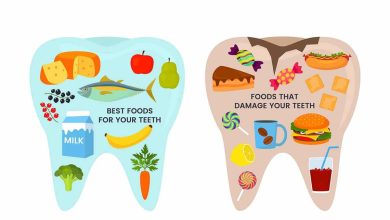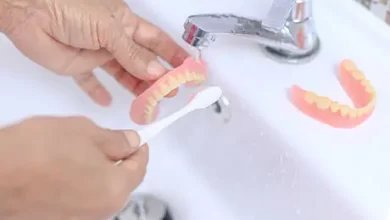What to do in the event of a dental emergency?

Fractured or cracked teeth are fairly common dental problems. Often caused by a shock, dental trauma is a lesion of one or more teeth. As a result, it is sometimes necessary to contact the emergency services or consult your dentist as soon as possible. But you don’t have to worry; in general and cosmetic dentistry, techniques for restoring broken teeth have evolved a lot in recent years.
The different types of dental trauma
There are several types of more or less serious dental trauma. However, depending on the nature of the trauma, the tooth is not affected in the same way.
· The contusion: the tooth is intact; it does not move
This is the least violent trauma that just causes the tooth to shake without any fracture. However, the tooth must be monitored because following the shock, a reaction can still occur in the dental pulp in the days that follow. The risk is to have a tooth that changes color, turns gray or no longer reacts to thermal tests.
· The crack: the tooth is cracked
Difficult to visualize and locate; only your dentist can diagnose it. A dental crack corresponds to a crack in the enamel and sometimes in the dentin without loss of dental tissue. It can be manifested by pain when you eat or when you put pressure on it and is sometimes accompanied by a little sensitivity to cold. The crack is in the form of a breach in the tooth surface which can quickly become an entry point for bacteria to the internal parts of the tooth.
· The fracture: the tooth is broken
There are several kinds of fractures: the coronary fracture and the root fracture.
The coronary fracture only concerns the dental crown, i.e., the visible part of the tooth, and leads to the loss of a piece of the tooth of variable size depending on the shock. This trauma can lead to pain upon exposure to hot/cold and/or during chewing. The closer the fracture is to the pulp, the more severe the pain. It is important to know that any coronary fracture, whatever its level, can lead to a loss of pulp vitality. This is why dental trauma at the coronary level is an emergency that must be received quickly in consultation.
The root fracture is the fracture of the roots of the tooth, which generally occurs following a shock at the level of the face. Visible on radiography, it may be associated with a fracture of the alveolar bone around the tooth and/or be accompanied by trauma to adjacent teeth.
· Dislocation: displacement or expulsion of the tooth
When it is a partial dislocation, we observe a displacement of the tooth in its alveolus, which can be moved easily. The movement can occur in several directions: toward the outside of the cell, toward the front or in all directions. When it is a complete dislocation, the tooth is completely out of its bone cavity, also called bostancı escort the expulsion of the tooth. It is possible to relocate if it is found and stored in very specific conditions.
Treatment of a tooth after trauma
Dental trauma, whether it affects milk teeth or permanent teeth, is never trivial. If nothing is done, both physical and aesthetic damage can have serious consequences.
Although the dental contusion can be painful, it is not serious. Healing takes place in a few days. It is still necessary to monitor the tooth the following days to ensure that it is not devitalized.
Once your dentist has identified the dental crack, he will offer you an adequate solution depending on the type of crack and its severity. The dental microcracks are superficial; you will be advised to adopt impeccable oral hygiene and follow up during regular dental examinations. If your tooth has suffered a fairly deep vertical crack that affects the dental pulp, a root canal treatment may be indicated for you. If the root of the tooth is affected, dental extraction then becomes the only solution to avoid complications.
Dental Fractures
In the case of dental fractures, several solutions can be proposed to you:
- If the fracture only involves the enamel of a tooth with rough or sharp edges, but without any pain, then the treatment adopted will aim to smooth the edges and improve the aesthetics of the tooth.
- If the dentin is exposed but not the dental pulp, you will be given a mild analgesic to reduce sensitivity to air and cold water and restoration of the tooth with a composite resin. If, on the other hand, the fracture is far too large, the best would be to place a dental crown to cover the bare dentin.
- If the fracture concerns the crown and/or the root, the survival of the tooth is strongly called into question. This situation is a dental emergency and requires the intervention of your dentist in Arlington, VA, for rapid treatment by placing an external retainer to maintain the tooth. Often, when the healing capacity of the tooth is insufficient, or the remaining root height is not enough, then extraction becomes necessary. Don’t worry; your doctor will offer you several restorative options in this case, such as bridges, dental implants, or partial dentures to restore chewing and speaking functions.
Partial Dislocation
In the case of partial dislocation, the solution varies depending on the orientation of the trauma. For these three cases:
- Lip dislocations
- Dislocations to the palate or tongue
- Dislocations in extrusions which involve the teeth being released and starting to come out of their socket
It is necessary to reposition the tooth associated with an external contention for approximately 6 weeks, adopt a soft or liquid diet throughout the blockage, and carry out regular mouthwashes. In the case of a partial dislocation in intrusion (when the tooth sinks towards the alveolus), it is possible to put the tooth back in its original position or let it return spontaneously to its normal position after a few weeks.
Complete Dislocation
During a complete dislocation, the tooth is then completely out of its socket. If we want to hope to keep the tooth, we must act quickly! The alveolo-dental ligament, which is the organ holding the tooth, is now exposed and deprived of nutrition. It is then necessary to find the tooth, to seize it by the crown and never by the root, to maintain it in an environment favorable to its survival, that is to say, to put it in milk or in physiological serum, but especially not in the water, and consult urgently. The speed with which the tooth will be reimplanted will guarantee the best chance of survival. Know that the most conclusive results are obtained for a time of less than 20 minutes.
Once you have arrived urgently at your dental surgeon, he will try to reposition the tooth in its socket and put a bonding retainer in place to secure the expelled tooth with the adjacent teeth. During the following days, monitoring of dental vitality is necessary to detect any signs of inflammation or infection.
If you have any questions or concerns about tooth fractures, please discuss them with your dentist. For general dentistry service in Arlington, visit Virginia dental care.
To read more valuable blogs, visit this link.





